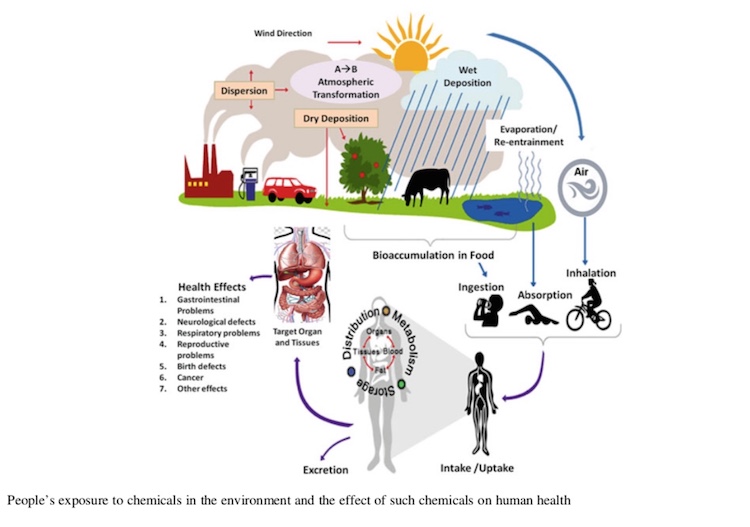Adverse Effects - Humans Intermediate

Reading Guide
A polluted air is a harmful complex combination of primary and secondary pollutants in the atmosphere. The US Environmental Protection Agency (USEPA) listed the six most common air pollutants as criteria air pollutant under the Clean Air Act. The primary criteria air pollutants (CO2, SO2, NOx, Particulate Matter, and Pb) are released into the atmosphere directly from their emission sources. Some of these chemicals contribute to chemical reactions. Due to the dry and wet deposition process, they deposit over ground/vegetation/ecosystems/water surfaces/building materials and cause negative impacts. The primary air pollutants also produce adverse health effects to human beings after their short-term/long-term exposure. Asthma, bronchitis, lung cancer, and cardiopulmonary problems are the major noticed due to inhalation exposure of these pollutants. Mental disorders, kidney disorders, and miscarriages are other harmful impacts. The WHO have reported the harmful effects of air pollutants in the past few decades. The direct and indirect effects of criteria air pollutants in changing climate are also discussed by the WHO.
Secondary air pollutants also play an important role due to their reactivity, toxicity, and the severity of impacts on ecological targets.
The two articles below present a reading guide with detailed information about the primary and secondary air pollutants and their impact on environmental health.
Material
Guide prepared by Dr. Saurabh Sonwani (Associate Member, APSI) & Dr. Pallavi Saxena (Advisory Board Member, APSI), 12/2021. For corrections or expansions please contact us.